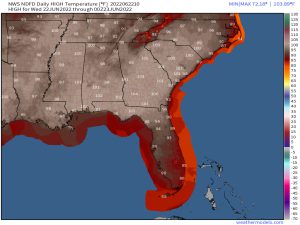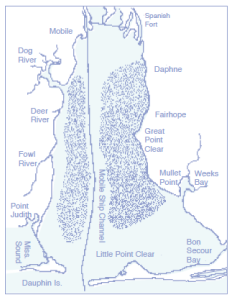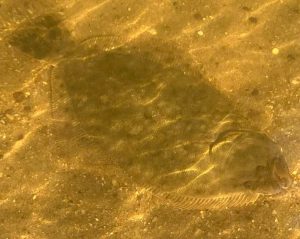
Boy, oh boy is it hot this week. Temperature predictions for today in the deep South look like the grades of a high achiever trying to earn extra credit for everything. I’ve been seeing highs of 104, 103, and 101–and many of these are not even in coastal Florida–but well inland throughout Mississippi, Alabama, Georgia, and even Tennessee.
At a recent dinner with friends, we were talking about how hot and soupy the water in their pool has been, and how the Gulf is starting to get uncomfortably warm. I commented that with temperatures this hot, I wouldn’t be surprised if they get a “Jubilee” over in Fairhope. When they asked me more about what I meant by jubilee, I went on to explain how during extended periods of heat, oxygen levels in the water drop so low that fish and invertebrates can barely breathe, resulting in bizarre behavior like blue crabs crawling out of the water.
Like clockwork, the next morning we started seeing posts on Facebook about a jubilee in Mobile Bay. The conditions just seemed right. These fascinating events have happened for ages, and most people who have witnessed one in person describe them in a wondrous manner, like seeing a miracle. Watching hundreds of aquatic organisms suddenly congregating in the shallow water, acting strangely, is a shocking sight. While I’ve never been lucky enough to catch one, my husband experienced a rare jubilee just off Ft. Pickens in the late 80’s. They are very unusual in Pensacola, but are typically an annual occurrence in Mobile Bay.

The shallow, nutrient-rich waters of Mobile Bay’s Eastern Shore seem to be ground zero for jubilees. A spot in Japan also sees regular occurrences, but nowhere else in the world experiences them with such regularity. Jubilees occur most often in late summer when the water gets really warm and dissolved oxygen levels drop. Locals and biologists mention a couple of criteria, including a calm, quiet bay, a rising tide, and cloudy skies. They occur early in the morning and rarely last beyond sunrise. Underwater, the conditions are specific as well. When plant material from marshes starts to break down in the water, it uses up dissolved oxygen, leaving little oxygen available for fish, shrimp, and crabs. A stratification of salinity, with saltier and more dense Gulf water, is layered below the lighter, fresher river water. This layer prevents oxygen from infiltrating to the bottom layer. That east wind moves the top layer of water offshore, while oxygen-deprived bottom layer is pushed inland by the rising tide. Bottom-dwelling fish and invertebrates are driven landward to the shallows—this is why most jubilees consist of large numbers of flounder, crabs, eels, and rays. Smaller fish are often caught in the cross current, as well.

Coastal residents often take advantage of this bounty by collecting the scores of available seafood that have arrived in their backyards. Because they are oxygen deprived, the fish and crabs are lethargic and cannot swim away, and easily dipped up in buckets and nets. Culturally, jubilees have long been a source of celebration, with a neighborhood bounty of seemingly heaven-sent seafood providing meals for the whole summer. Jubilees have been recorded in Mobile Bay since the Civil War, but have likely been occurring for millennia. While red tide and other algae blooms can be triggered by human sources of pollution, jubilees are a natural occurrence brought on by a confluence of bathymetry, heat, salinity, and tides. Unless collected by hungry residents, jubilees do not result in fish kills—once the sun comes out and photosynthesis resumes, oxygen levels recalibrate and aquatic wildlife swim back into deeper, better oxygenated water.
 2
2
